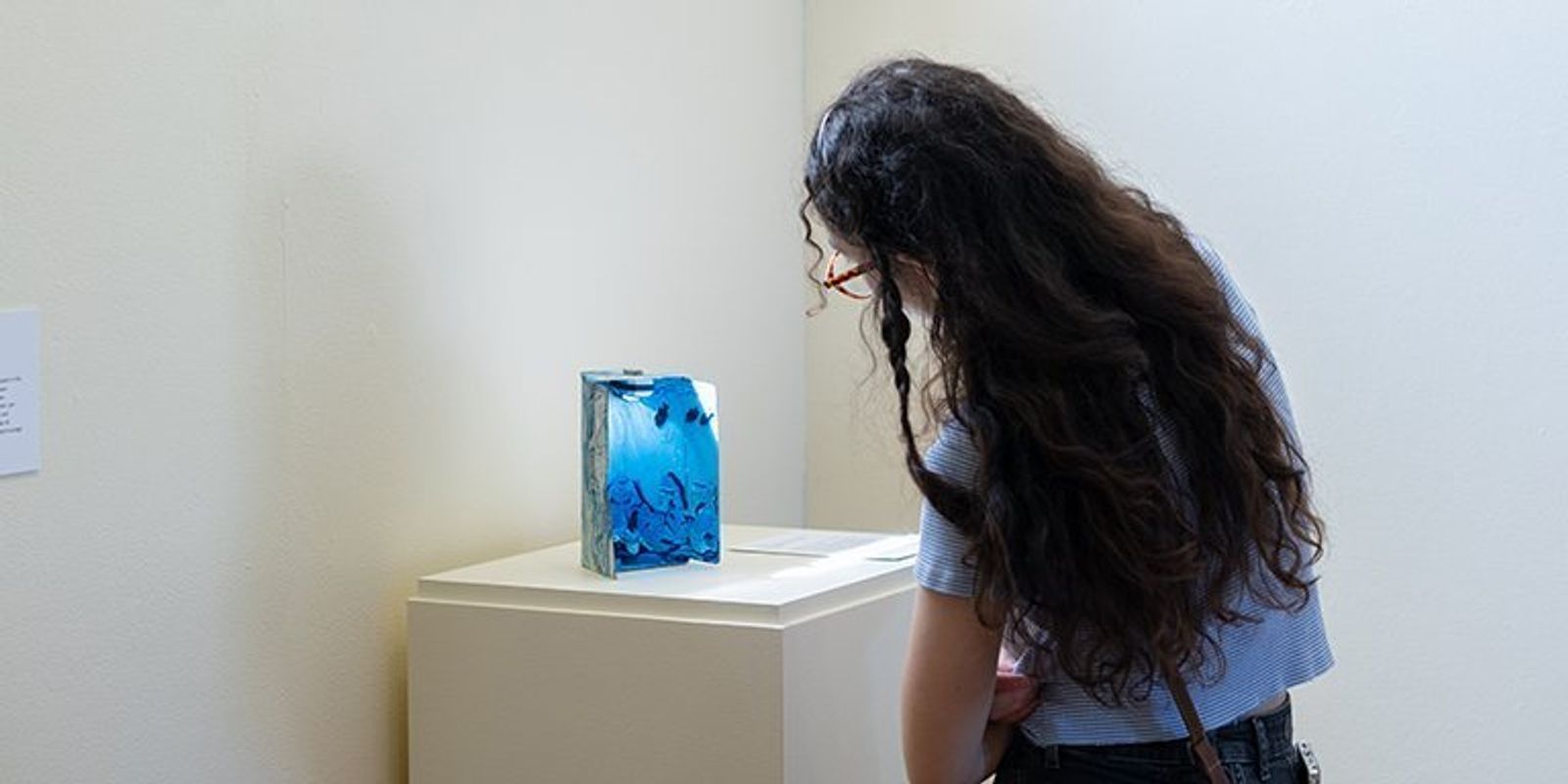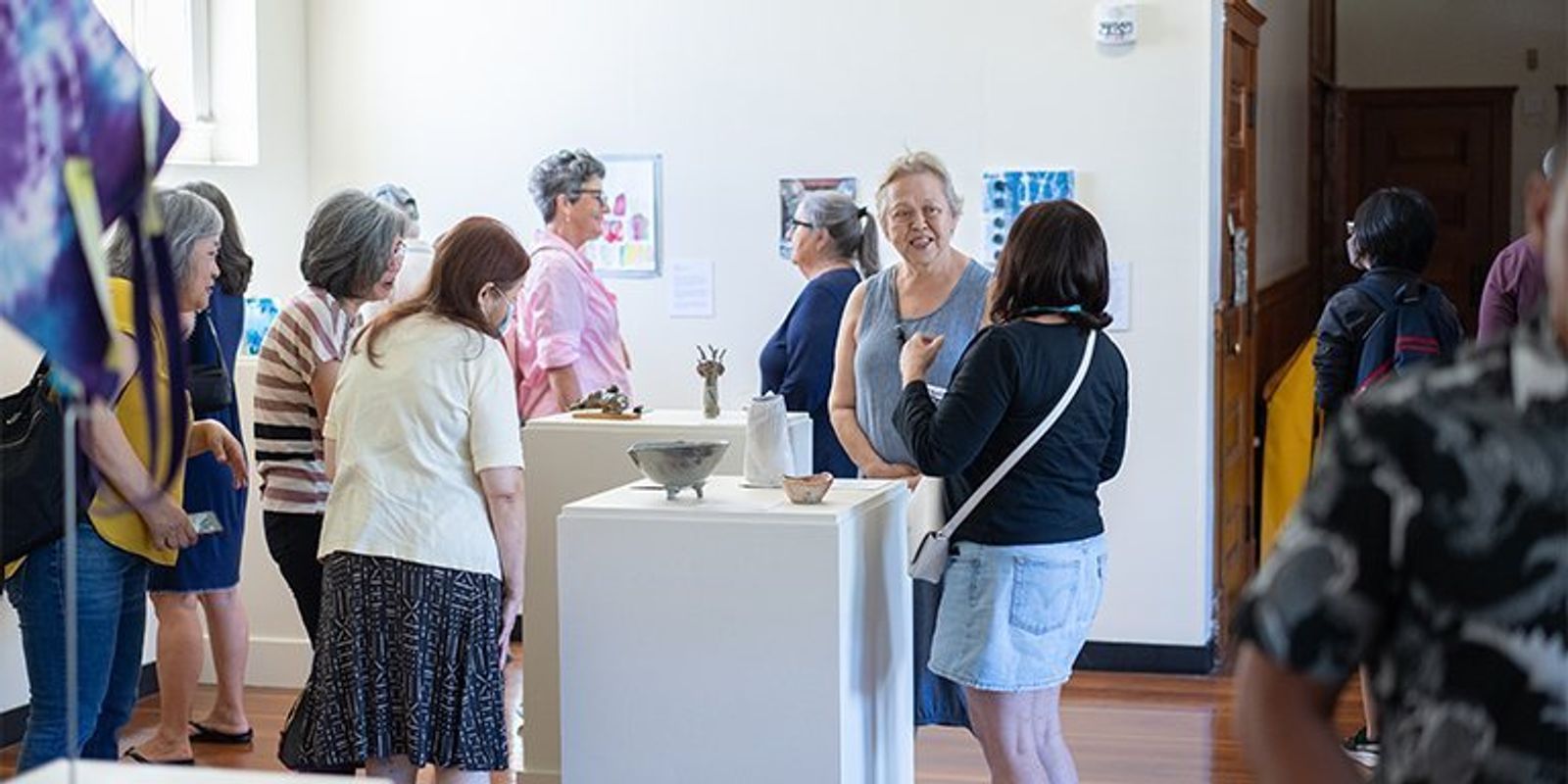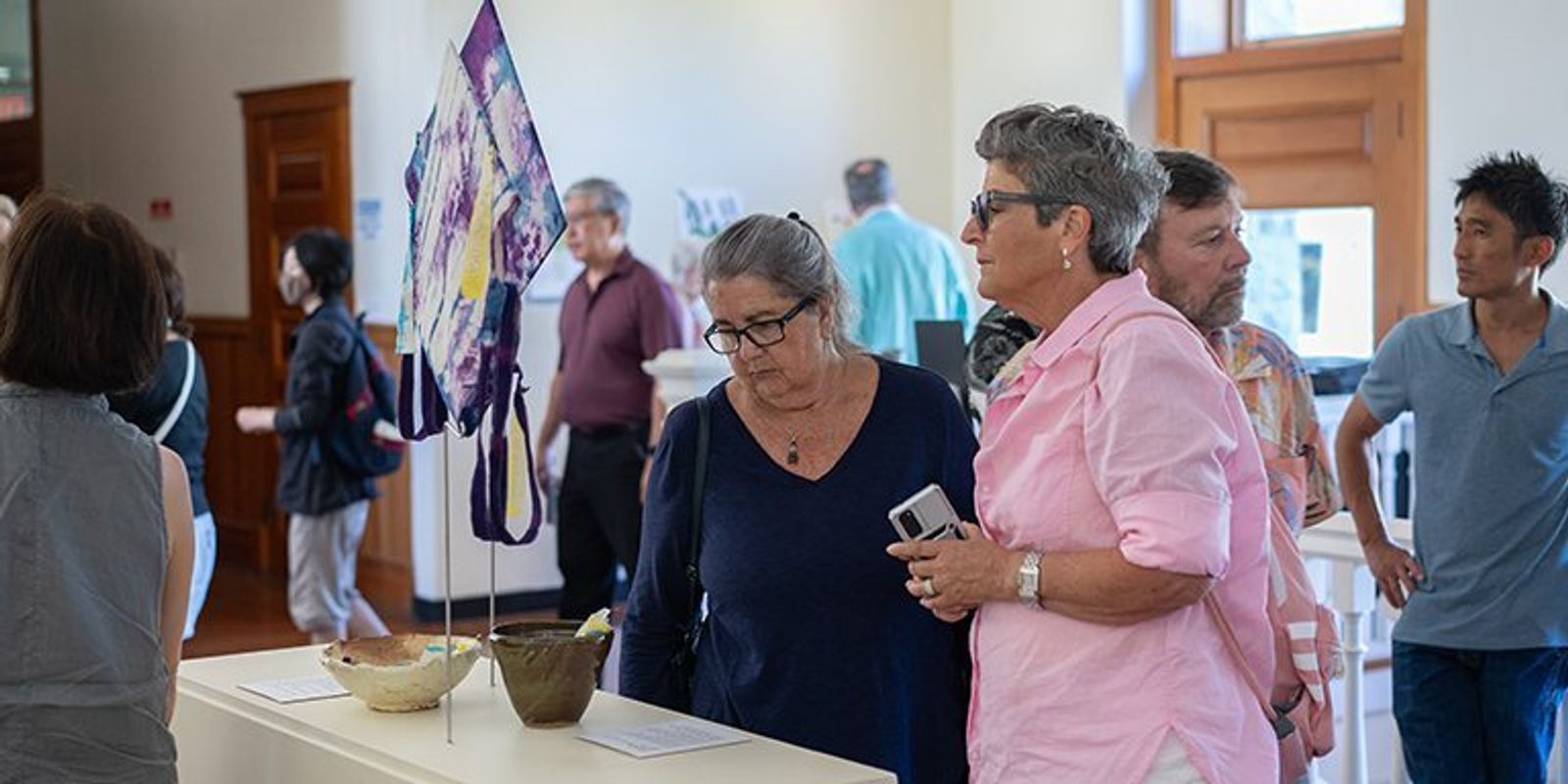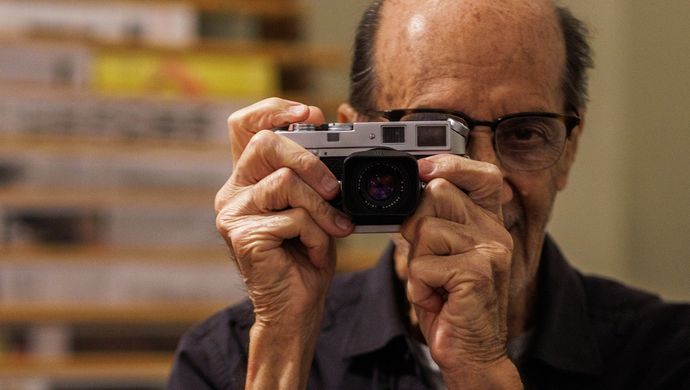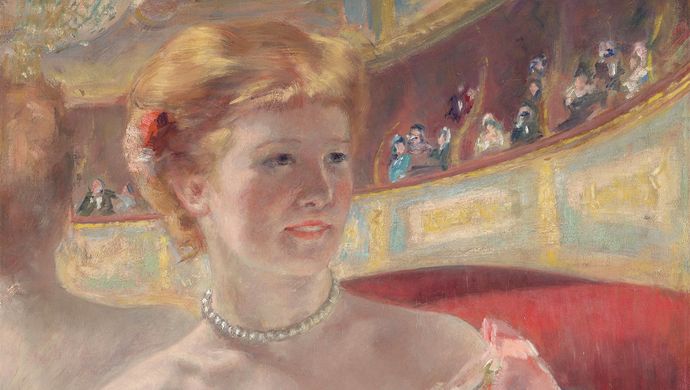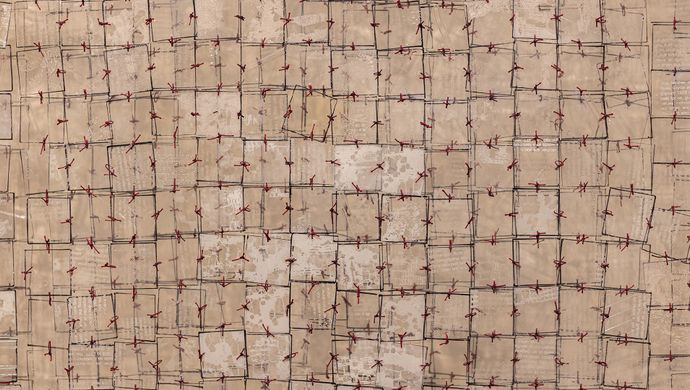 Story
Story
Art for Life: Brain activation and community
“I enjoyed the class. [Instructor] Forest [Leonard] is very gentle with us, no pressure, and is always supportive,” she says of her Art for Life experience.
You may know Hill as Teuila “Kumu” Tuileta from Magnum P.I. The actor moved to Hawai‘i five years ago for the role and started coming to HoMA. “I’m a member. This is my favorite museum. It’s so walkable, and they’re so supportive of local artists and bring in artists like David Hockney. I love that there’s a mix of community art and the classics.”
Last year she took a metal arts class at the Art School, and this spring she opted for the Art for Life ceramics class. Designed for students age 55 and up to foster not only art skills but community and wellness, the Art for Life program is striking a chord with its target audience.
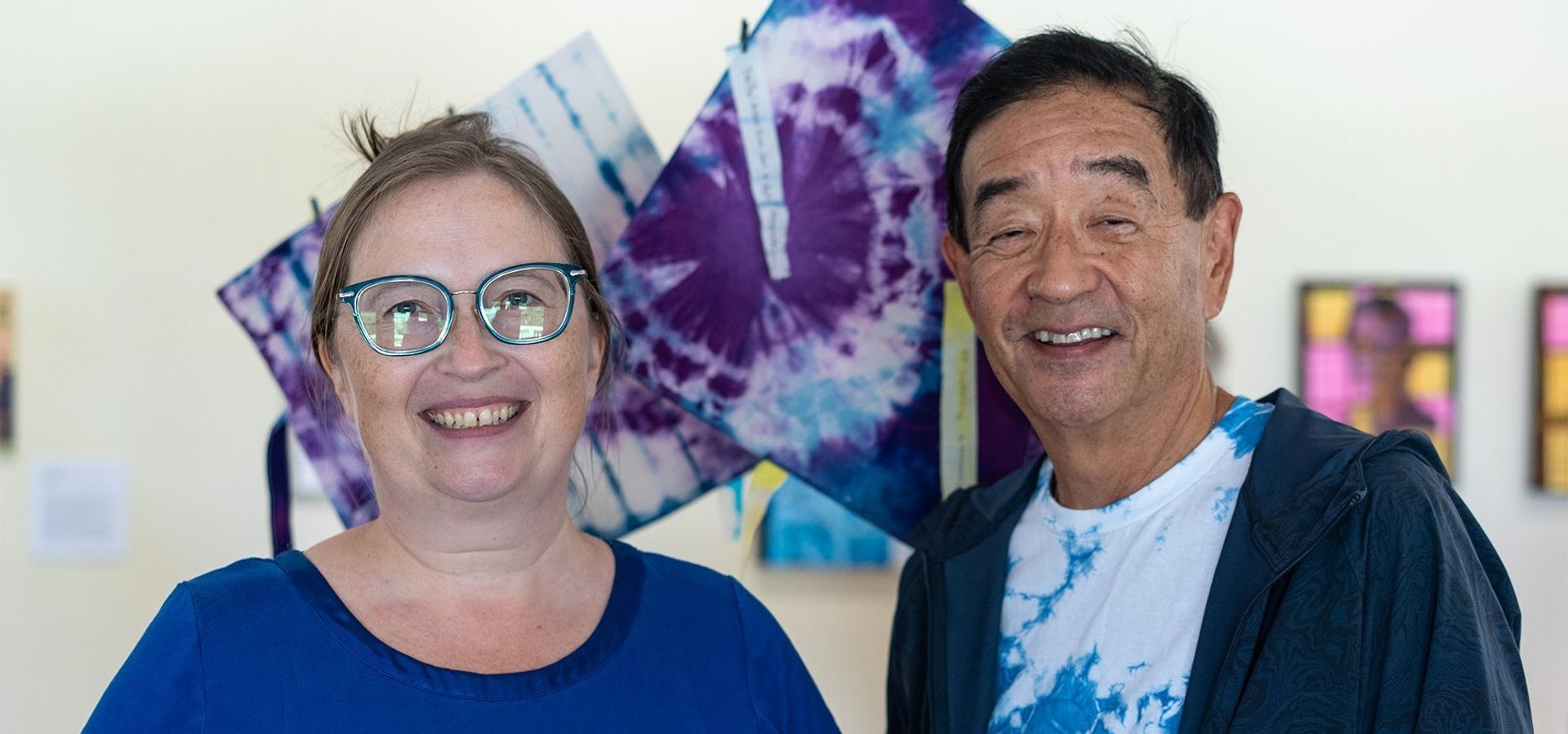
Recently retired pediatrician Stephen Yano was looking for ways to activate the parts of his brain he wasn’t using during decades of practicing medicine. He signed up for the Art for Life shibori class with instructor Amber Coppings. “I’m totally left brain,” he says. “The first day of our class Amber helps us work with fabric. And that first little tear, that feeling of tearing, you’d be surprised how unfamiliar that is to someone like me that is in science. So that’s the fun part. The great thing that the class offered me is letting the brain go, rather than cognitively thinking about letting the brain go.”
The class had Yano sewing for the first time in his life and taking chances. “In medicine you’re either right or you’re wrong. With this, we didn’t have a right or wrong and Amber encouraged us to try things.” The result is the only interactive work in the show. He created shibori bags, what he calls “gathering bags” meant to gather positive feelings, and invites visitors to leave a piece of themselves by writing alliterative desires on strips of fabric and pinning them to the bags.
He also made some new acquaintances. “It’s fun, it’s part of retirement. The group was great, we are asking for telephone numbers and we’ll gather again after the class. I think community is important too. I’ll be back.”
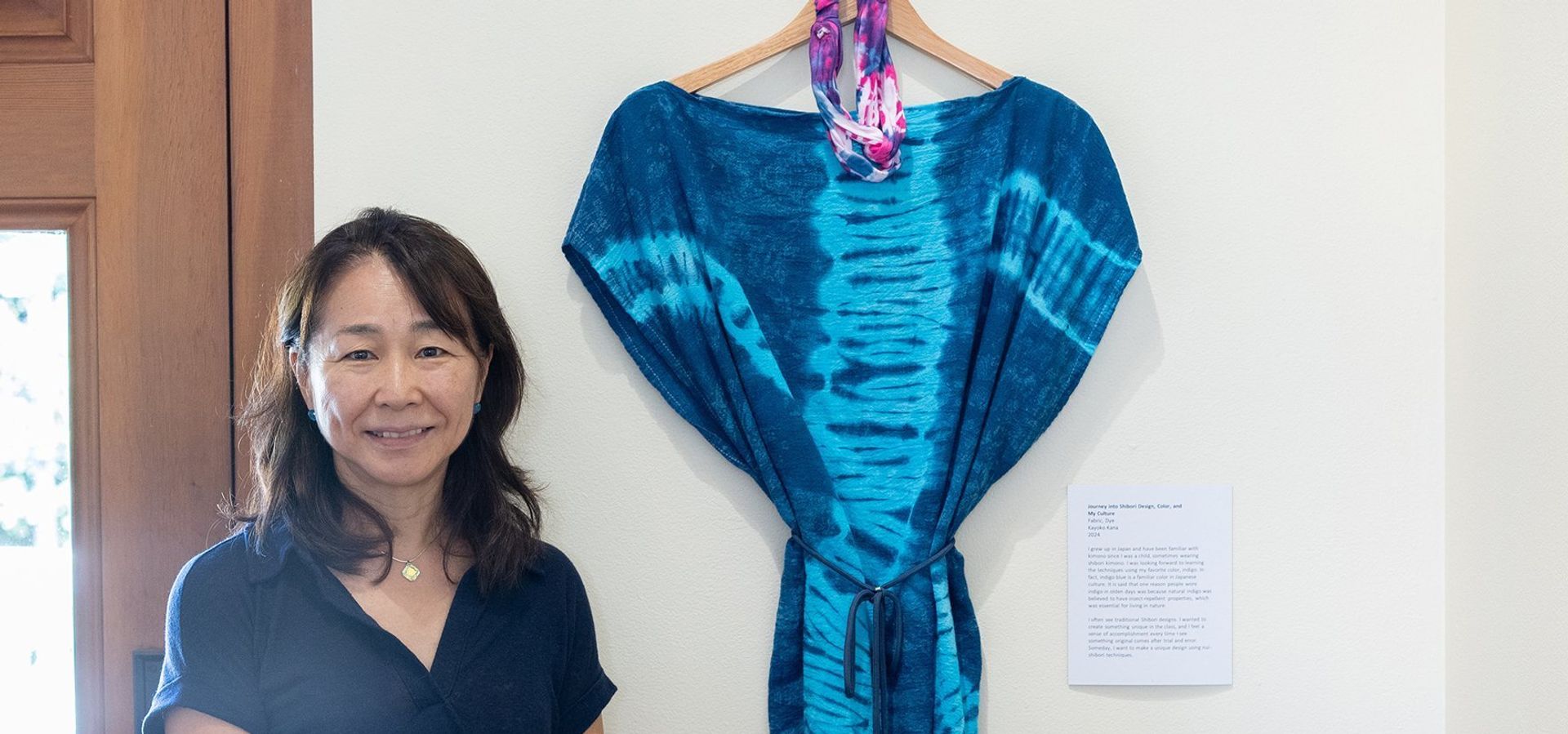
Kayoko Kana, who has a demanding job in IT, found the shibori class helped her destress from her work day. “I am sitting down all day at the computer,” she says, “so to relax I have to come here. Shibori is very new for me. Every time I try to do something new I get excited.”
Launched in January, the first two sessions of Art for Life were funded by a grant from E.A. Michelson Philanthropy. Based on the success of the pilot program, HoMA will continue Art for Life classes. Registration starts Aug. 21 for fall classes that run October to December. The Art School will offer Art for Life classes in ceramic hand-building and shibori creations.



